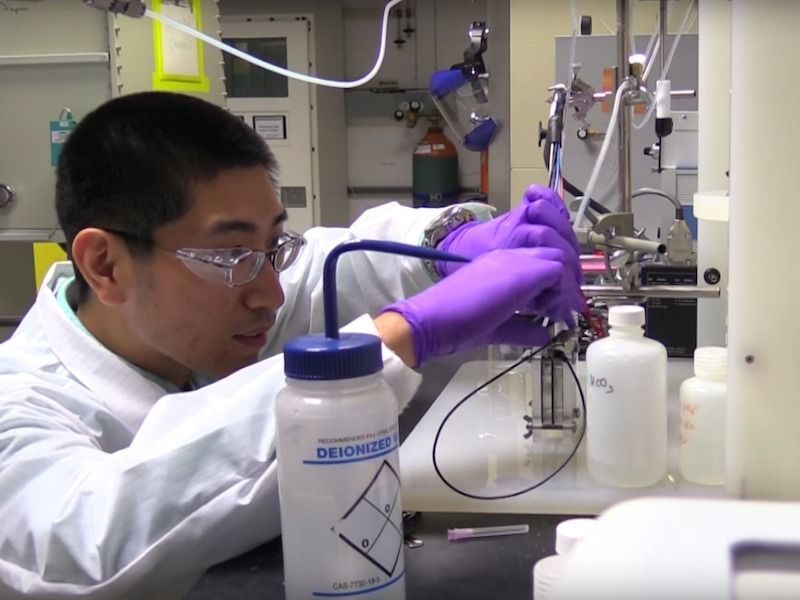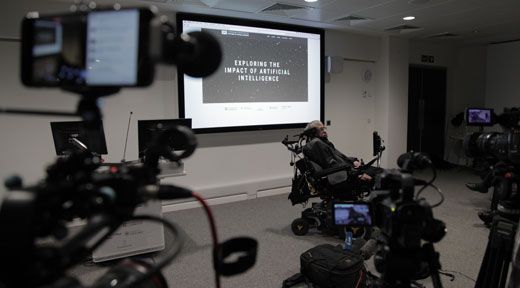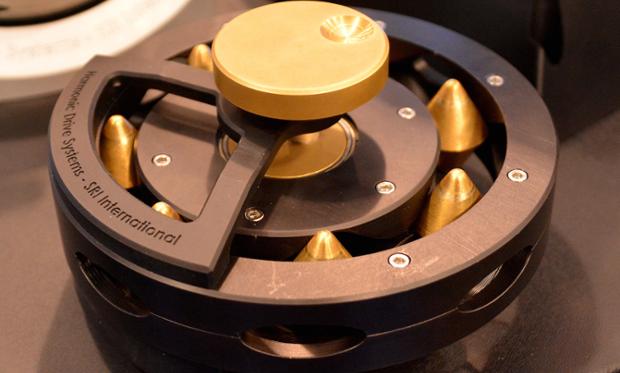Page 10473
Oct 21, 2016
Caloric restriction can be beneficial to the brain, study shows
Posted by Steve Hill in categories: biotech/medical, food, life extension, neuroscience
Studies of different animal species suggest a link between eating less and living longer, but the molecular mechanisms by which caloric restriction affords protection against disease and extends longevity are not well understood.
New clues to help solve the mystery are presented in an article published in the September issue of Aging Cell by scientists at the Center for Research on Redox Processes in Biomedicine (Redoxoma), one of the Research, Innovation and Dissemination Centers (RIDCs) funded by FAPESP.
The results of in vitro and in vivo experiments performed by the Redoxoma team included the finding that a 40% reduction in dietary caloric intake increases mitochondrial calcium retention in situations where intracellular calcium levels are pathologically high. In the brain, this can help avoid the death of neurons that is associated with Alzheimer’s disease, Parkinson’s disease, epilepsy and stroke, among other neurodegenerative conditions.
Oct 20, 2016
“The best or worst thing to happen to humanity” — Stephen Hawking launches Centre for the Future of Intelligence
Posted by Amnon H. Eden in category: robotics/AI
Artificial intelligence has the power to eradicate poverty and disease or hasten the end of human civilisation as we know it – according to a speech delivered by Professor Stephen Hawking this evening.
Oct 20, 2016
Your Phone Company Might Buy Your Cable Company — By Abigail Tracy | Vanity Fair
Posted by Odette Bohr Dienel in categories: big data, internet, media & arts, mobile phones, policy, satellites
Oct 20, 2016
Mining Asteroids? An Interview with the CEO of Planetary Resources
Posted by Montie Adkins in categories: finance, law, space
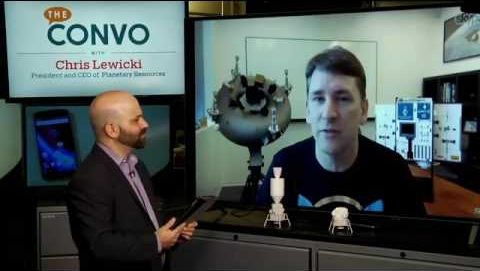
Group metals, a lil history on aluminum, technology needed, space law and more. The one great idea presented here is that many folks think stuff will be brought back to Earth. Though there would be some of that the resources out there will be used out there.
As Humans venture out far away from the Earth into the solar system, they will need material resources to keep us going. Where do we get those from? One for-profit company, Planetary Resources, wants to be the one to make it happen.
Continue reading “Mining Asteroids? An Interview with the CEO of Planetary Resources” »
Oct 20, 2016
Move over, lasers: Scientists can now create holograms from neutrons, too
Posted by Shane Hinshaw in category: holograms
For the first time, a team including scientists from the National Institute of Standards and Technology (NIST) have used neutron beams to create holograms of large solid objects, revealing details about their interiors in ways that ordinary laser light-based visual holograms cannot.
Holograms—flat images that change depending on the viewer’s perspective, giving the sense that they are three-dimensional objects—owe their striking capability to what’s called an interference pattern. All matter, such as neutrons and photons of light, has the ability to act like rippling waves with peaks and valleys. Like a water wave hitting a gap between the two rocks, a wave can split up and then re-combine to create information-rich interference patterns (link is external).
An optical hologram is made by shining a laser at an object. Instead of merely photographing the light reflected from the object, a hologram is formed by recording how the reflected laser light waves interfere with each other. The resulting patterns, based on the waves’ phase differences (link is external), or relative positions of their peaks and valleys, contain far more information about an object’s appearance than a simple photo does, though they don’t generally tell us much about its hidden interior.
Oct 20, 2016
SRI Demonstrates Abacus, the First New Rotary Transmission Design in 50 Years
Posted by Elmar Arunov in categories: engineering, physics, robotics/AI
I know, it doesn’t seem like there’s any possible way that a transmission system could be interesting enough that we’d dedicate an entire article (and video!) to it. But here we are: As soon as SRI explained how their new Abacus transmission worked, we were absolutely sure that it was cool enough to share. In a nutshell, here’s why: It’s the first new rotary transmission design since Harmonic Drive introduced its revolutionary gear system in the 1960s*, and it might give harmonic gears a literal run for their money.
The physics of most electric motors generally dictates that the motors are happiest when they’re spinning very fast. Unless you want to use them to simply spin a thing very fast, you’ll need to add a rotary transmission that can convert low torque, high speed rotation into higher torque, lower speed rotation. If you’ve got the budget, the way to do this is with a high-performance harmonic gear like the ones offered by Harmonic Drive. Roboticists like harmonic gears because they are compact, have high gear ratios, and, perhaps most important, don’t have backlash, which is essentially the amount of wiggle room that you get with conventional gear-based transmissions. In robotic applications, wiggling means that you don’t know exactly where everything is all the time, making precision tasks something between irritating and impossible.
Harmonic gears are great, but they’re also superduper expensive, because they require all kinds of precision machining. Alexander Kernbaum, a senior research engineer at SRI International, has come up with an entirely new rotary transmission called the Abacus drive, and it’s a beautiful piece of clever engineering that offers all kinds of substantial advantages:
Continue reading “SRI Demonstrates Abacus, the First New Rotary Transmission Design in 50 Years” »
Oct 20, 2016
Drone receives wireless power, on the fly
Posted by Shane Hinshaw in categories: drones, energy
Given that the battery life of most multicopter drones typically doesn’t exceed 30 minutes of flight time per charge, there are many tasks that they simply can’t perform. Feeding them power through a hard-wired tether is one option, although that only works for applications where they’re hovering in place. Scientists at Imperial College London, however, are developing an alternative – they’re wirelessly transferring power to a drone as it’s flying.
For their study, the scientists started with an off-the-shelf mini quadcopter. They proceeded to remove its battery, add a copper coil to its body, and alter its electronics.
The researchers also built a separate transmitting platform that uses a circuit board, power source and copper coil of its own to produce a magnetic field. When placed near that platform, the drone’s coil acts as a receiving antenna for that magnetic field, inducing an alternating electrical current. The quadcopter’s rejigged electronics then convert that alternating current to direct current, which is used to power its flight.
Oct 20, 2016
Bendable WhammyPhone offers flexible music control
Posted by Shane Hinshaw in categories: computing, media & arts, mobile phones

Earlier this year, a team from Queen’s University in Canada demonstrated a smartphone prototype called ReFlex that had a flexible display capable of flipping virtual book pages in response to what were dubbed bend gestures. Researchers from the same Human Media Lab have now developed a similar device called the WhammyPhone that’s claimed to be the world’s first virtual musical instrument for flexible phones.
The WhammyPhone prototype sports a 1920 × 1080 pixel full high-definition Flexible Organic Light Emitting Diode (FOLED) touchscreen display and, like the ReFlex device, includes a bend sensor. This means that a user can manipulate the sound of electronically-generated instruments such as a guitar or violin by bending, squeezing or twisting the “smartphone.”
Continue reading “Bendable WhammyPhone offers flexible music control” »
Oct 20, 2016
A peek into the future of lithium batteries
Posted by Shane Hinshaw in categories: chemistry, mobile phones
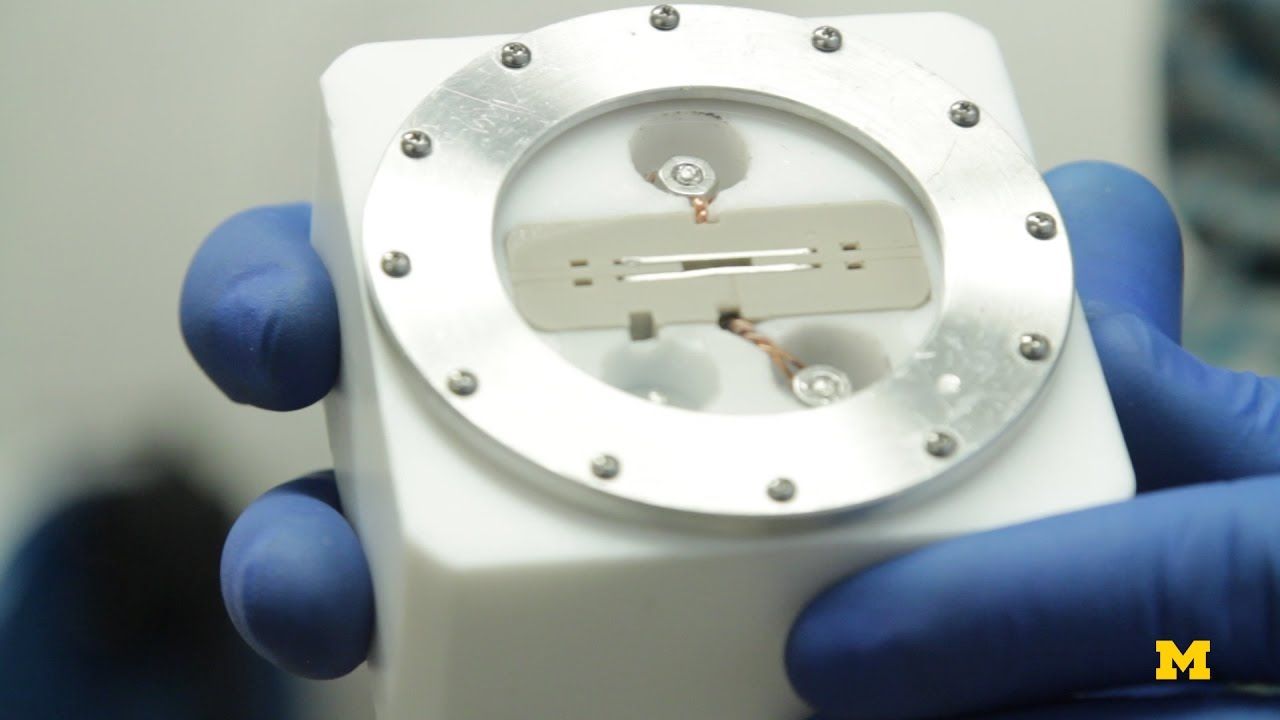
In a great example of a low-cost research solution that could deliver big results, University of Michigan scientists have created a window for lithium-based batteries in order to film them as they charge and discharge.
The future of lithium-ion batteries is limited, says University of Michigan researcher Neil Dasgupta, because the chemistry cannot be pushed much further than it already has. Next-generation lithium cells will likely use lithium air and lithium sulfur chemistries. One of the big hurdles to be overcome in making these batteries practical is dendrites — tiny branch-like structures of lithium that form on the electrodes.
Continue reading “A peek into the future of lithium batteries” »
